Is your garden a floral wonderland in summer but devoid of flowers in winter? There is a period of time between the last leaf fall of autumn and the first crocus opening in early spring when we crave not only color, but also flowers. While the nurseries may not be as well stocked in January as they are in July, you should still be able to find these seasonal treasures to bridge that gap — and if the ground is not frozen, you can plant them straight away.
This selection includes tiny bulbs that carpet the ground, fragrant shrubs and even a tree that blooms in winter. Whether you have a sunny, open space or shady woodland, containers or acreage, you can always have flowers — even in winter.
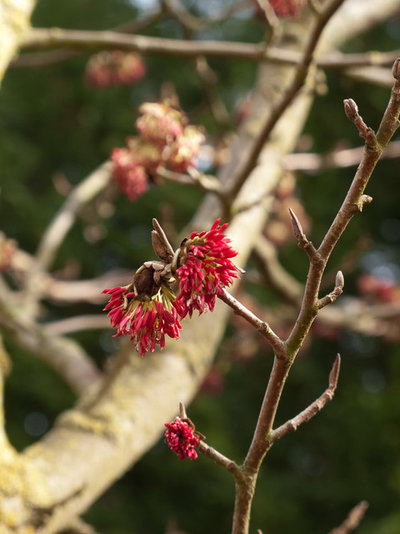
Le jardinet
1. Ruby Vase Persian Ironwood(
Parrotia persica ‘Ruby Vase’)
A columnar variety of a beautiful tree, Ruby Vase Persian ironwood is usually selected for its attractive foliage, which opens bright green with purple margins and ignites the fall landscape with fiery shades of orange, red and gold. However, there is a lesser known attribute that is worth a second look — its flowers. In late winter to early spring, a profusion of small red spidery flowers appears at the tips of its bare branches.
At only 12 feet wide, Ruby Vase can fit easily into smaller gardens, yet its 30-foot mature height gives it a significant presence.
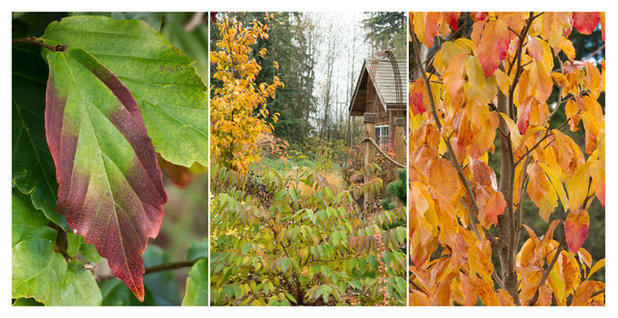
Le jardinet
How to use it. With its columnar habit, Ruby Vase is perfect for tight spaces such as side gardens or areas adjacent to pathways.
This slender tree also makes a colorful punctuation mark in larger borders, where it could be surrounded by a mass of black-eyed Susans to create a vibrant display.
Origin: Northern Iran
Where it will grow: Hardy to -20 degrees Fahrenheit (USDA zones 5 to 7; find your zone)
Water requirement: Moderate
Light requirement: Full sun for best color, but will also grow in partial shade
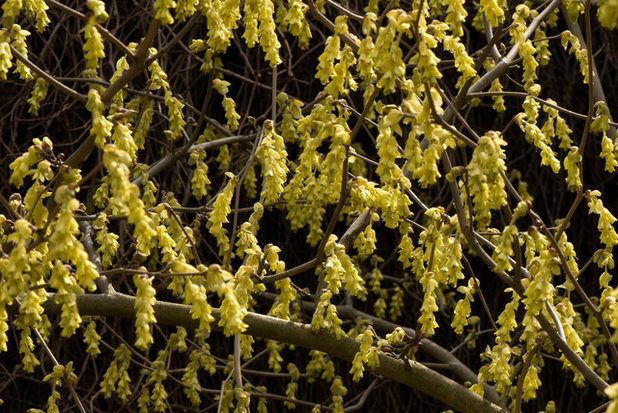
The New York Botanical Garden
2. Spike Winterhazel(
Corylopsis spicata)
Spike winterhazel is a wonderful spreading shrub for the back of the border, where it will grow slowly to 4 to 8 feet tall and 8 to 10 feet wide. Short racemes of pale primrose-yellow flowers dangle from the bare branches and add a sweet scent to the air from March to April.
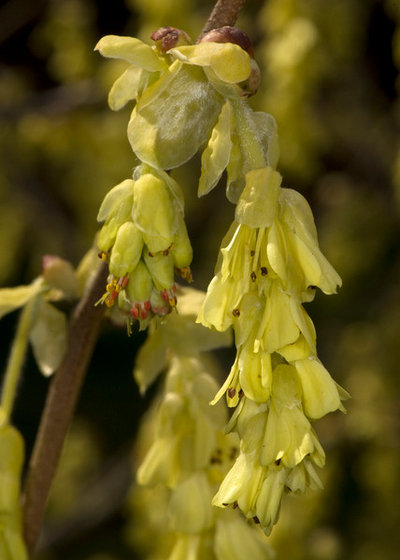
The New York Botanical Garden
How to use it. Spike winterhazel looks most at home in a woodland setting, perhaps underplanted with snowdrops and primroses. However, it will also thrive in full sun; in more open borders, keep surrounding plants low so that its graceful winter silhouette can be appreciated.
Look for the variety ‘Golden Spring’, which has spectacular golden foliage, fading to chartreuse.
Origin: Japan
Where it will grow: Hardy to -20 degrees Fahrenheit (zones 5 to 8)
Water requirement: Moderate
Light requirement: Full sun or dappled shade
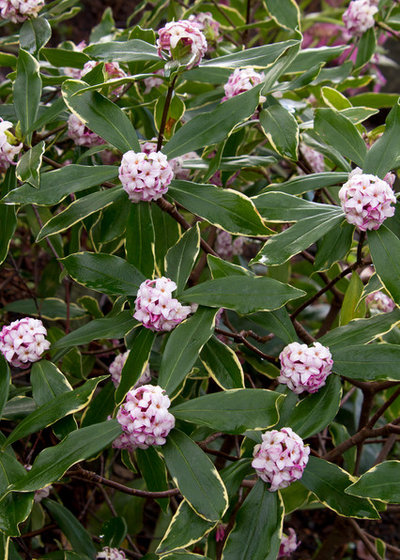
Monrovia
3. Winter Daphne (
Daphne odora ‘Aureo-marginata’)
The attractive evergreen foliage, edged with a delicate touch of creamy yellow, is reason enough to grow this shrub, but it is the intoxicating, spicy fragrance that will win you over.
Delicate pink buds open to clusters of white flowers that cover the shrub from February to March.
Winter daphne grows at a moderate pace to 3 to 4 feet tall and wide; it can be lightly pruned after flowering to maintain a compact shape.
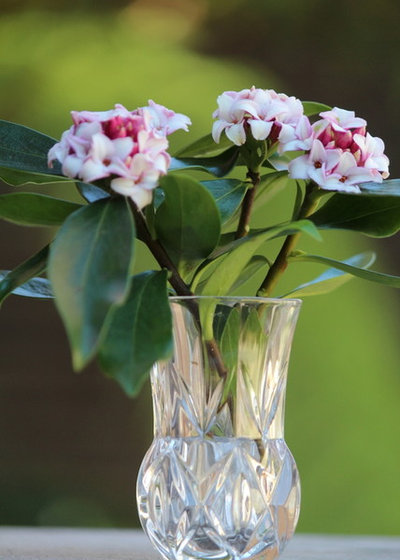 How to use it.
How to use it. Plant winter daphne close to the house so you can enjoy the fragrance in February and March. Even better — bring a sprig indoors; a single bloom will perfume an entire room.
Many references indicate that this shrub does not like root disturbance, yet I have grown smaller plants in a container for several years before transplanting them to the landscape without any ill effects.
Origin: China and Japan
Where it will grow: Hardy to 0 degrees Fahrenheit (zones 7 to 9)
Water requirement: Moderate
Light requirement: Partial shade with protection from hot midday sun
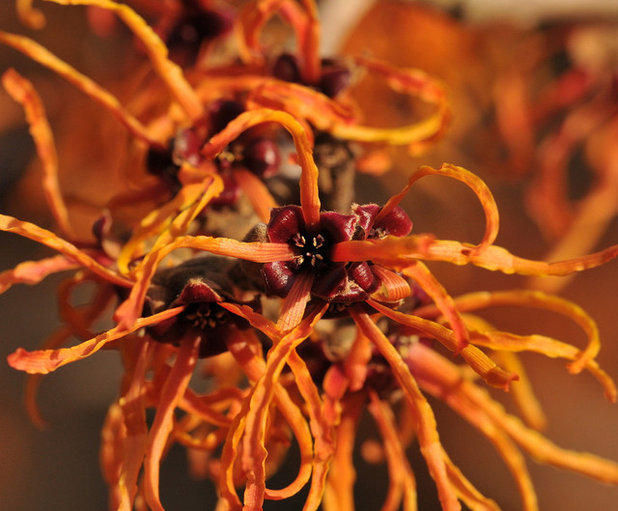
Steven N. Severinghaus
4. Witch Hazel(
Hamamelis x
intermedia)
Fragrant, spidery flowers in shades of red, orange or yellow cover the bare branches of this large spreading shrub from late January to March. However, witch hazel is equally stunning in fall, when the foliage takes on fiery shades tinged with purple.
Witch hazel is a large shrub or a small tree. Some varieties reach 20 feet tall and wide, so allow plenty of room for the branches to spread.
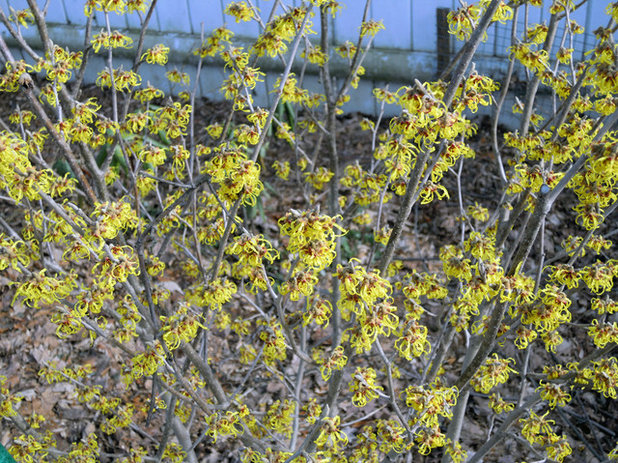 How to use it.
How to use it. Witch hazel makes a beautiful winter statement alongside a pathway or anchoring the corner of a wide border surrounded by lower plants.
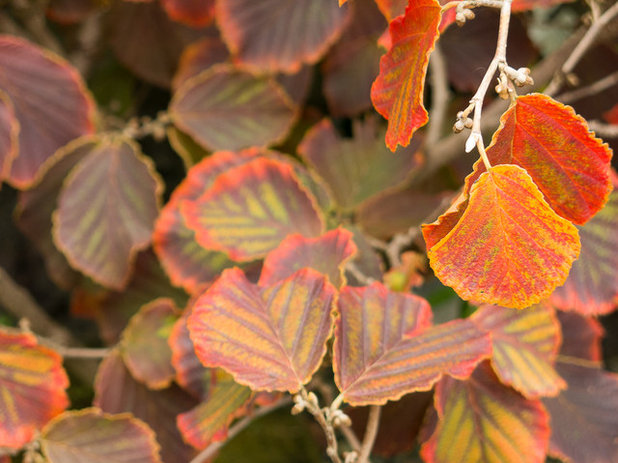
Le jardinet
Since its main seasons of interest are fall and winter, I have also grown it behind tall summer-blooming perennials such as phlox. These tend to be past their best by late summer and can be cut down to reveal the stunning fall foliage of the witch hazel.
Look for Jelena (copper), Arnold Promise (yellow) and Diane, shown here (orange with red stamens).
Origin: A hybrid of garden origin; a cross between
H. japonica and
H. mollisWhere it will grow: Hardy to -20 degrees Fahrenheit (zones 5 to 9)
Water requirement: Moderate
Light requirement: Full sun
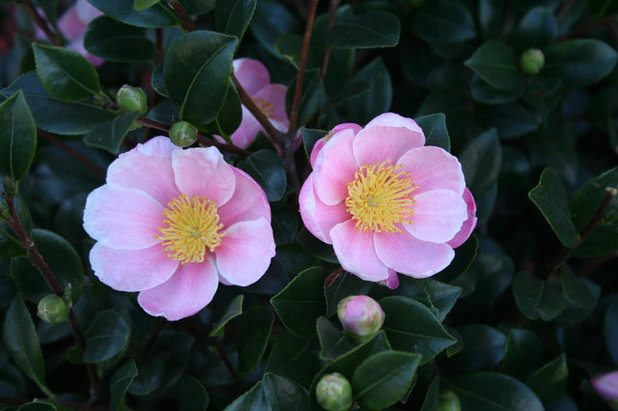
Monrovia
5. Sasanqua Camellia(
Camellia sasanqua)
Whereas the better known Japanese camellia flowers in spring, Sasanqua camellia blooms earlier and also tolerates more sun.
The glossy, dark green leaves are evergreen, making this a shrub for year-round interest. It can grow to 10 feet tall and wide depending on the cultivar. Flowers range from red and pink to white in both double and single forms, some of which are also fragrant.
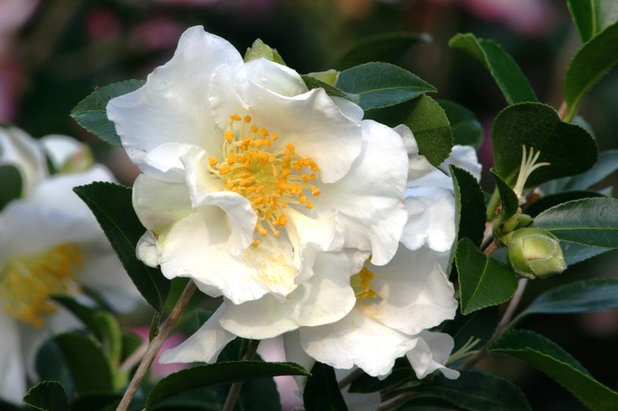
Monrovia
How to use it. With some easy pruning, camellia can be espaliered against a wall or trellis to screen unwanted views or provide height and color in narrow spaces.
Place this early blooming shrub where it can be enjoyed from inside the home, if you have a spot sheltered from afternoon sun. It also would work well in any mixed border design, planted en masse as an informal hedge or at the edge of a woodland garden.
Look for Yuletide (red, single flowers with a large boss of yellow stamens), Pink-A-Boo (clear pink single flowers, which are fragrant) and the smaller fragrant Fairy Blush (white flowers suffused with pink).
Origin: China and Japan
Where it will grow: Hardy to 0 degrees Fahrenheit (zones 7 to 9)
Water requirement: Moderate
Light requirement: Partial shade
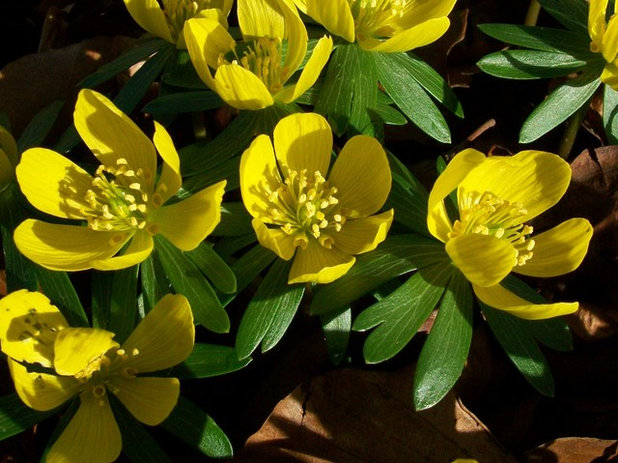 6. Winter Aconite
6. Winter Aconite(
Eranthis hyemalis)
There is nothing quite so cheerful on a winter day as a swath of these golden-yellow flowers. Resembling buttercups, they open wide to reveal a fuzz of stamens.
Winter aconite is perfect for naturalizing, since it spreads easily yet is not invasive. At just 3 to 6 inches tall, winter aconite will provide a carpet of color from January to March, depending on your zone. It is robust enough to push its way through snow and withstand frost, and thankfully the deer leave it alone.
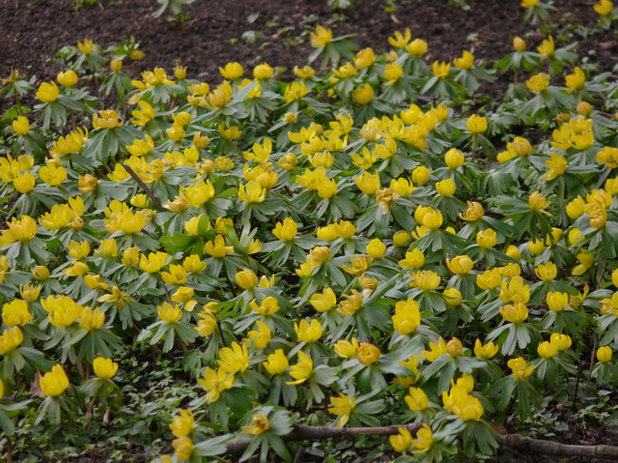 How to use it.
How to use it. These bulbs are perfect for a rockery, at the front of a border, alongside a pathway or allowed to naturalize in an open woodland.
Because of their petite stature, avoid planting them near taller, evergreen plants. Plant them around herbaceous perennials such as hosta or Japanese forest grass, where the dying foliage of the winter aconite will quickly be hidden by emerging growth in spring.
Origin: Europe
Where it will grow: Hardy to -40 degrees Fahrenheit (USDA zones 3 to 7; find your zone)
Water requirement: Low to average
Light requirement: Full sun or open shade





